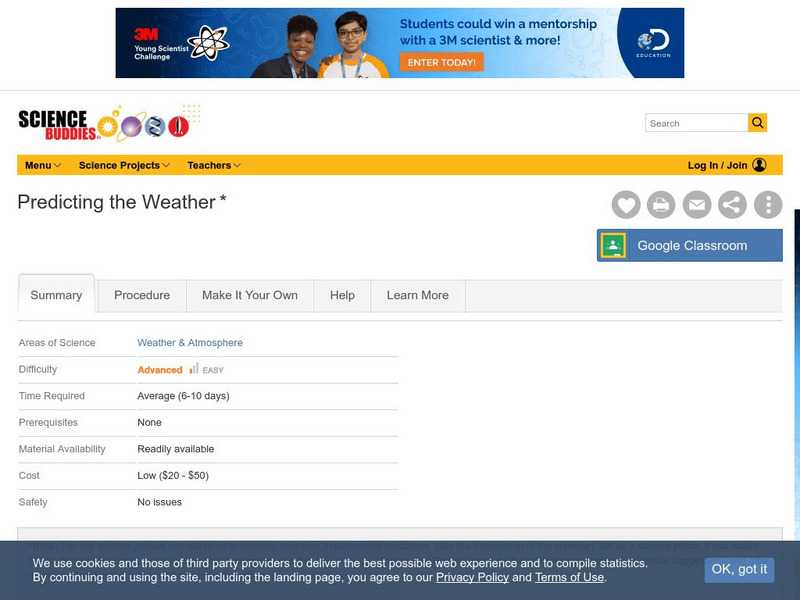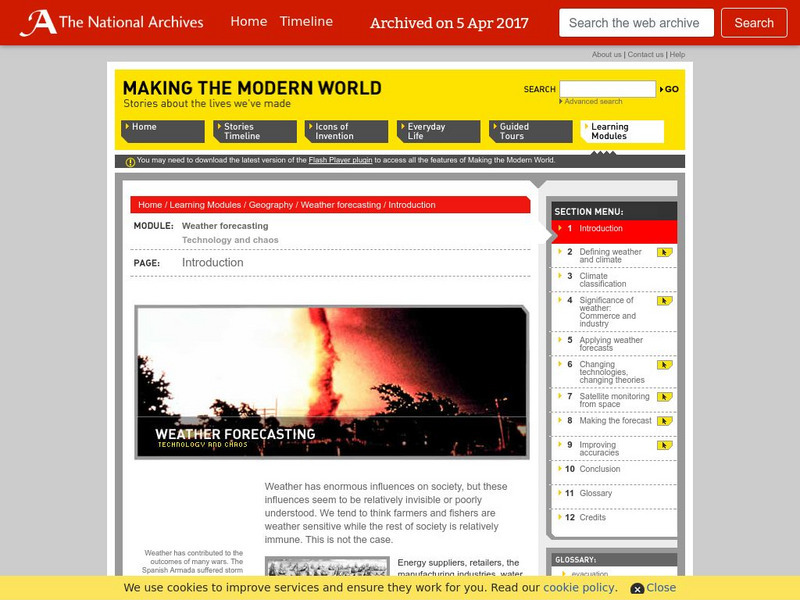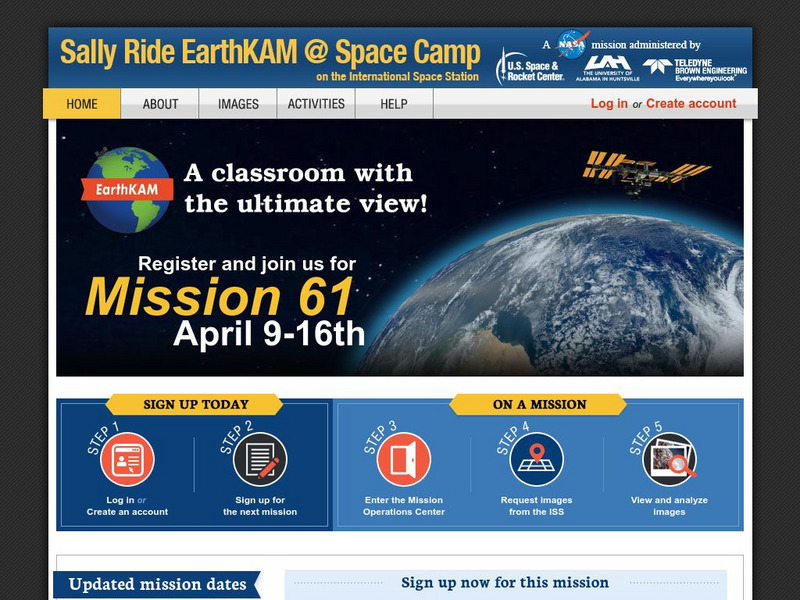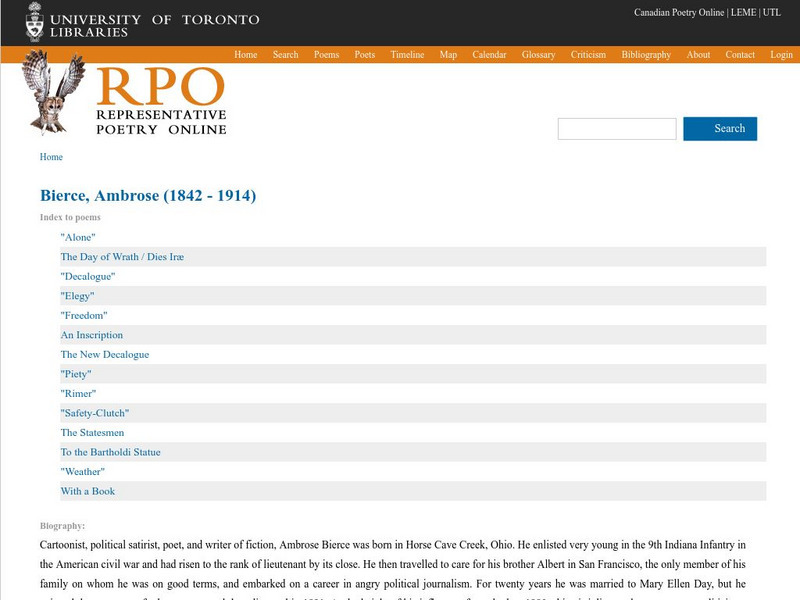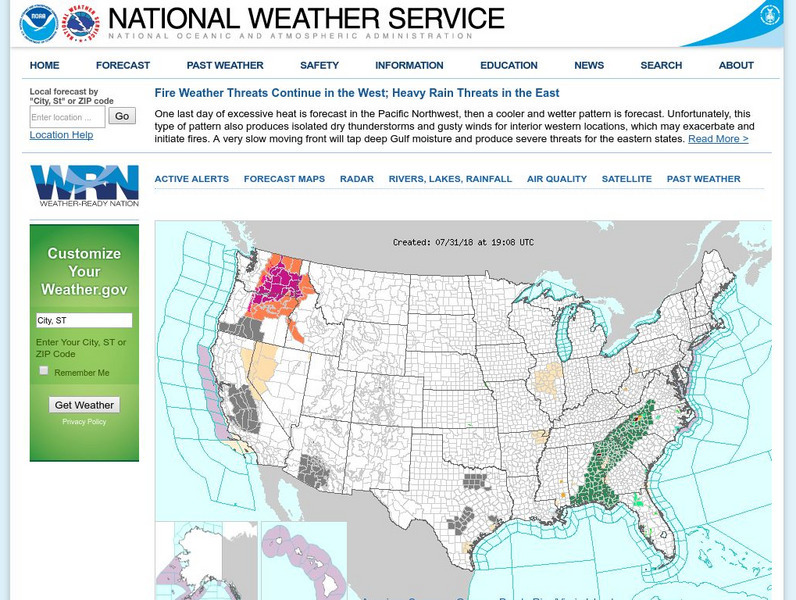Science Buddies
Science Buddies: Predicting the Weather
Here's a good way to get yourself on TV. This science fair project will help you learn how to predict the weather. So who knows, maybe you'll be more accurate than your local meteorologist.
Science Buddies
Science Buddies: How Does a Wind Meter Work?
On a windy day it is hard to keep your hat on. The power of the wind can even be strong enough to power large wind turbines to make electricity. In this experiment, find out how you can make your own instrument to measure the speed and...
Science Buddies
Science Buddies: Tracking Geomagnetic Storms in the Ionosphere
The Sun is the ultimate source of the energy that powers weather systems on Earth. Geomagnetic storms are sun-powered storms in the upper atmosphere, arising from energized particles that are periodically ejected by the Sun. Among other...
Science Buddies
Science Buddies: Make Your Own Psychrometer
From the name, you might guess that a psychrometer is an instrument designed to measure your thoughts. Actually, it is an instrument that can help you forecast the weather. Read more to find out how it works.
Science Education Resource Center at Carleton College
Serc: Phenology and the Weatherguide Calendar: An Introduction
A lesson to introduce learners to phenology and the Weatherguide calendar. Actvities include stories, journaling, and worksheet completion.
Science Education Resource Center at Carleton College
Serc: Climate Time Line Information Tool
A tool that summarizes climate history for time spans from 1 year to 100,000 years ago and beyond. It explores the relation between human development, weather, and climate. Students learn how past climate is measured, provides basic...
TryEngineering
Try Engineering: Measuring the Wind
Students explore the design of anemometers and how they are used in measuring the speed of wind. Working in teams of "engineers", they will design, build, and evaluate the effectiveness of their own anemometers, presenting their findings...
Smithsonian Institution
Smithsonian Education: Tomorrow's Forecast: Oceans and Weather [Pdf]
A lesson unit for Grades 4-9 on how the ocean affects climate and weather. Includes worksheets (also in Spanish) and maps.
PBS
Teaching Bhutan: The Water Cycle & Bhutan
Interactive science lesson plan that teaches students about the water cycle in relation to mountain ranges and monsoons common in Bhutan. Make a cloud in a bottle!
Science Museum, London
Making the Modern World: Weather Forecasting
The learning module helps students gain a deeper understanding of weather forecasting. Some topics explored are climate classification, making the forecast, and significance of weather. Activities are included.
Other
University of Windsor: Climates on a Rotating Earth
This site offers the text of a college lecture on the atmosphere, with information on the effect prevailing westerlies have on North America.
Gulf of Maine Research Institute
Gulf of Maine Aquarium: Comparing Oceans: Warm Up to the Gulf Stream
This site features some background information and a satellite image of the Gulf Stream that you can analyze using information also given at the site. There is a link to an activity about the formation of eddies along the Gulf Stream as...
Other
Nasa: Iss Earth Kam
Students get a whole new perspective of the world through images obtained from the International Space Station. Students can even request images to be taken through ISS EarthKAM. Activities and educator guides are provided.
Other
Simple Science: Snow and Ice Ii
The innovative resource compares snow and ice cover in the Northern Hemisphere over a period of 24 years. The images are obtained from satellite measurements of visible and microwave radiation. The activity has an interactive online...
University of Toronto (Canada)
University of Toronto: Poetry of Ambrose Bierce
This site from the University of Toronto provides the full text of 14 of Ambrose Bierce poems. Also included are brief notes on his life and works.
Other
Met Office: Science: Creating Forecasts
Modern weather forecasting applies scientific knowledge to predict future atmospheric conditions across the globe from observations of the current state, made from land; at sea; in the air, and from space. Take a look at how scientists...
Other
Siemens Science Day: Earth Science: How's the Weather? [Pdf]
Students make their own weather station by using homemade version of real weather measurement equipment and use their equipment to make observations and predictions about the local weather.
Other
North Carolina Museum of Natural Sciences: Groundhog Day 2010 [Pdf]
Designed for Grades K-8, this teaching guide is chock-full of ideas for celebrating Groundhog Day, with activities like making shadow puppets, examining weather lore and studying cloud formations.
Education Place
Houghton Mifflin: Eduplace: Wacky Web Tales: The Weather Station
This fill-in-the-blank Wacky Web Tale includes a story about a weather station. It is fun and serves an interactive grammar review. Wacky Web Tales are fun and interactive grammar reviews. Students fill in blanks for different parts of...
University of Guelph
City of Guelph
Located 100 kilometers west of Toronto, Guelph is ranked among the top ten cities in Canada to live in. Links provide information on the cities government, services and tourism activities.
NOAA
Noaa: National Weather Service: Jetstream: The Ocean
Online school for weather presents a complete guide to the ocean and its effect on our weather such as El Nino, hurricanes, floods, and droughts. Explores layers of the ocean, sea water, waves, tides, rip currents, and more. A review...
NOAA
Noaa: National Weather Service: Jetstream: Clouds
Online school for weather presents much information about clouds. Discover how they form, the different types, their colors, and more. A review quiz and lesson plans are included for further enhancement of the topic.
National Weather Service
National Weather Service
Official United States Weather Bureau source for weather maps and forecasts. Contains forecasts, maps, warnings, data, current conditions, and storm warnings.
National Geographic
National Geographic: Extreme Weather on Other Planets
Examine the variety of weather found on all of the planets in the solar system with this classroom exercise. Students will see a video and observe differences and similarities among the planets.
